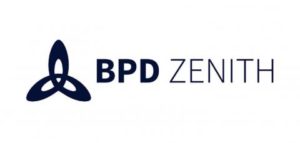Effectively managing and maintaining assets in the Facilities Management sector
The benefits of BIM in the Facilities Management industry
Peacock Engineering’s Building Information Modelling (BIM) process provides significant benefits to Facilities Management organisations. Being able to effectively manage and maintain assets after they have been built is critical to the business model and revenue generation of companies in the sector.
Our experts can use BIM data from the commissioning phase of a build, and use this to build the asset location hierarchy for Maximo®. This way, clients can leverage the BIM model data for the entire asset lifecycle.
This is particularly beneficial for organisations that are concerned with the operational performance of their assets over time.
BIM provides several other benefits to facilities management businesses, including being able to:
- Strengthen building handover
- Create a digital twin of the built environment and its assets
- Enhance project coordination and collaboration with stakeholders
- Use 3D visualisations to enable better planning for maintenance programmes and building alterations
- Maintain a record of change to the physical facility and its assets
BIM enables companies to invest in the sustainability of their new asset and improve the overall management of key company assets, by truly understanding what their assets are. This results in better maintained buildings throughout the facilities management sector.


BIM’s role in Facilities Management EAM systems
For facilities management companies, the built environment represents a crucial business asset.
Integrating BIM data into an existing EAM system, such as IBM Maximo, provides a number of opportunities for facilities management organisations to maximise the value and usage of any given asset. It allows maintenance and operations to be carried out through the EAM system, without the need for an additional stand-alone system.
This helps to:
- Understand asset lifecycle costings
- Generate cost savings
- Improve asset utilisation
- Maximise asset availability
As time goes by, there will be AI solutions and analytics available, linked to BIM.
The ongoing rapid advances in technology means that facilities management organisations have the opportunity to harness BIM in order to more closely look at their underlying business model.
They can establish how it can deliver significant opportunities that make the business more efficient, provide a competitive advantage, and how to create a sustainable supply chain throughout the life-cycle of the built asset.
Application of BIM in Facilities Management
Facilities Management businesses need to have a neutral platform to combine BIM with their Maximo® system, i.e. to have the BIM data in a format that will integrate naturally with their existing system, and which requires no further training to interrogate and use.
There are a number of high-profile projects which have used BIM for effective management of key assets in recent years, including the Sydney Opera House.
The Australian Government saw the project as a flagship opportunity to demonstrate the value BIM brings to the facilities management sector.
This value is provided through features that enable:
- Comparing business processes and performance metrics with best practice
- Efficient procurement of materials, as requirement
- Optimum service delivery
The Australian Government stated that BIM helped to deliver the broader corporate objectives.
Other examples of facilities management teams using BIM with their existing systems include Durham Cathedral, where BIM improved the efficiency of the building management and operation. Another example is the University of Salford’s relocation management to Media City, where the team successfully used BIM for maintenance, operations and space management.


Organisation-wide benefits with BIM
Recent studies show that only 20% of the total cost of a building is spent during design and construction, whereas 80% is spent during operations. Many facilities management organisations struggle with major inefficiencies when adopting building data from the construction crew.
Having the right data available through BIM results in:
- Improved visibility of final output and better communications, meaning accurate pricing for services provided
- Improved asset management, meaning live information is held on the asset in real-time
- Mitigates maintenance risks – safety measures can be built in
- Cost savings from efficient procurement and maintenance regimes
- Improved efficiency of projects as information uses as built (not as designed) data
- Creates a sustainable building over the lifetime of the asset for the asset owner
When executed correctly, BIM can be used to support the business operations and processes of any facilities management business.
Peacock Engineering works with the facilities management sector to build the management of BIM information, and the updating of that, as part of the ongoing work management process.
We help clients to understand what the maintainable assets are, and how to leverage relevant BIM data in the best possible way.
Using BIM as part of an organisation’s EAM system enables more effective handling of key assets’ operations.
This ensures that the transfer of data from the BIM into Maximo® is successful and enables continued, long-term effective maintenance of the asset.
Harnessing all the advantages offered by BIM
Ongoing rapid advances in technology means that facilities management organisations have the opportunity to harness this progress to look at their underlying business model.
These companies can establish how they can use BIM to deliver significant opportunities that enable them to:
- Make the business more efficient
- Provide a competitive advantage
- Create a sustainable supply chain throughout the life-cycle of the asset
At Peacock Engineering, we recognise that BIM plays a different role in construction than it does in operational management. As you move into operational management, the facilities management company is not maintaining absolutely every nut and bolt of the asset; it is not recording the work done at a microscopic asset level.
Therefore, our job is to help the client understand what the maintainable assets are and what is the relevance of the BIM data, and how that can be leveraged in the best possible way. This ensures that our clients do not disappear into the minutiae of the BIM model, and enhances the client’s return from the project.

Get started with a better EAM solution – contact our experts today
Call us on +44(0)20 3356 9629 or use our contact form below.Contact us now






